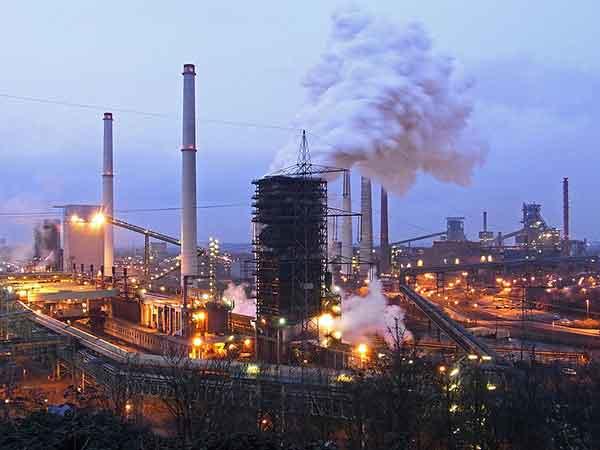Corrosion Resistant Humidity & Temp Sensors
There are many industrial processes that contain acid or caustic gases. Power plants, potash dryers and ore processing are just a few harsh industrial environments. These applications need accurate humidity and temperature sensors to control the process efficiently. Humidity also has a large impact on the acid gas dew point temperature. In most applications, the plant wants to keep the process temperature above the acid dew point temperature or corrosion will occur causing equipment failures. We will review some of these processes below.
The Challenges of Measuring Humidity & Temperature in Corrosive Processes
The major challenge of measuring humidity and temperature in corrosive processes is preventing corrosion of the sensor. Using sensor materials that are resistant to specific chemicals is what is needed but there isn’t one material that is resistant to all chemicals. Because of this, it is important to also look at heating the sensors above the process temperature so acid / caustic gases won’t condense on the sensor. Alloys like Inconel and Hastelloy are also resistant to corrosion and can be used for sensor materials. Lastly, you can plate the sensors with nickel which is also corrosive resistant to many acids.
Corrosive Industrial Environments for Humidity & Temperature Sensors
Harsh, corrosive processes (with corrosive components) for humidity & temperature sensors include:
Black Liquor Recovery Boiler – (H2S, COS, NAOH)
Combined Cycle Power Plant – (H2SO4)
Coal Fired Power Plant – (H2SO4, HCl)
Municipal Waste Power Plant (H2SO4, HCl, HF)
Copper Refinery (H2SO4)
Fluidized Catalytic Cracker – (H2SO4)
Lime Kiln (H2SO4, HCl, HF)
Potash Dryer (KOH)
Cement Kiln (H2SO4, HNO3, HCl)
Carbon Black Furnace (H2SO4)
Fiberglass Insulation Curing Ovens (condensed organics)
Coke Oven (H2SO4, H2S)
Asphalt Heater (H2SO4)
Fertilizer Sulfuric Acid Plant (H2SO4)
Calcium Hypochlorite Dryer (HCl)
Biosolids Dryer ( H2SO4, H2S, HCl, HF)
Alumina Calciner (H2SO4)
Process Images
Predicting Acid Dew Points
There are many compounds that react with process gas humidity to form an acid gas. A perfect example is the reaction between water and and sulfur trioxide (SO3). They react to form sulfuric acid mist (H2SO4). The following equations predict acid formation as a function of water content.
Corrosion Testing
Corrosion testing utilized in many industries is the use of corrosion coupons. This method involves a pre-weighed metal specimen exposed to an industrial environment for a given duration, typically anywhere from 60-120 days. The basic measurement of this testing is the weight loss within the specimen over that given time. Thus, most data for corrosion of alloys in high-temperature gases can be expressed as the corrosion rate with units of weight change/area.
Fig 5. Corrosion Coupons
H2O Corrosion Resistant Humidity Sensor
Humidity 2 Optimization sensors are designed to overcome issues with corrosive gases. The probes are made of 316SS and heated above the process temperature to operate reliably in corrosive gas streams. Nickel plating options are also available.
The in-situ sensor is an open half bridge capacitor where the second half bridge is located in the transmitter to form a full bridge. All electronics are located in the transmitter. This allows the H2O sensor to work in very high temperatures (up to 800F).
Lastly, H2O also developed an aluminum oxide filter with pore sizes between 50 and 100 nanometers. Almost all particulate matter is larger than our pores in industrial applications so the filter will not blind.
The sensor obtains the sample by diffusion so there are no mechanical parts pulling a sample and blinding the filter by exerting a negative pressure on the filter. The only requirement for the H2O sensor in high particulate environments is positioning the probe perpendicular to the process gas.
Fig 6. H20 Humidity Sensor Installed on Potash Dryer







